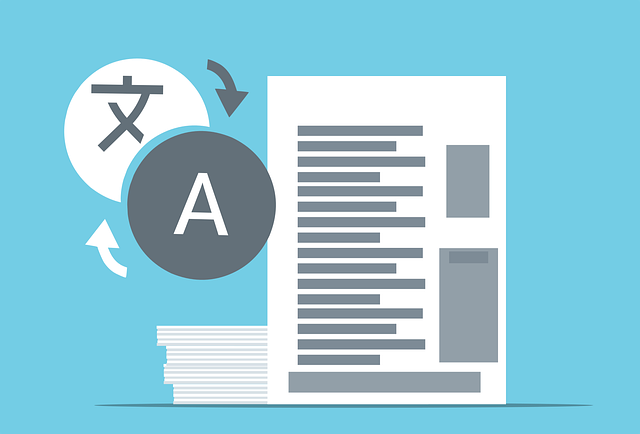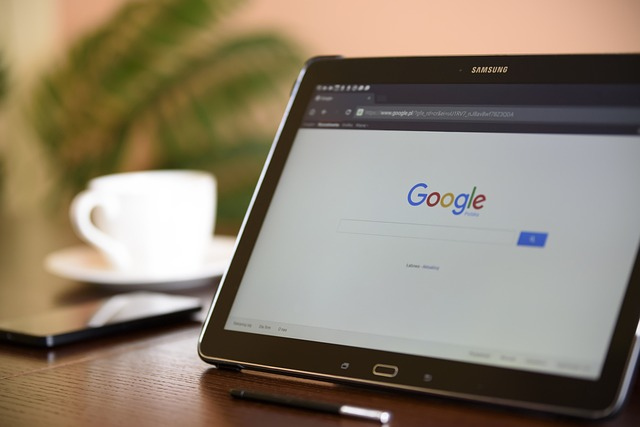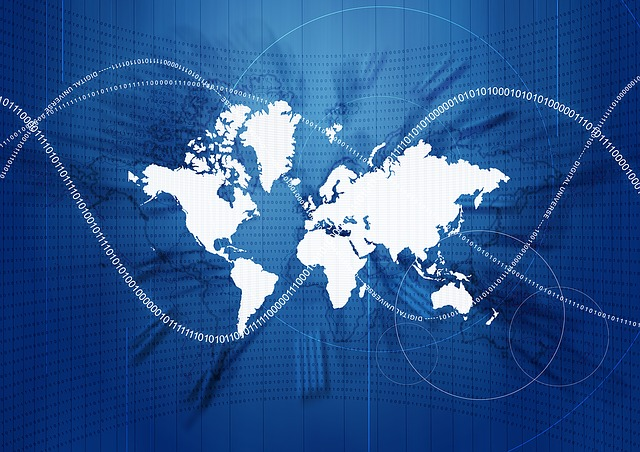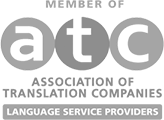In a world where communication transcends borders, language barriers can still pose significant challenges. Enter Google Translate, a powerful tool that bridges the gap by providing instant and free translation services. But how does it fare when it comes to professional translations in 2023? In this blog post, we will delve into the depths of Google Translate, exploring its features and comparing it to professional translation services, providing you with the insight needed to make the best choice for your translation needs.
Short Summary
- Experience the power of Google Translate for quick and convenient language translation.
- Leverage advanced features such as voice and image translation to enhance accuracy.
- Compare capabilities of Google Translate vs professional services from a Translation Agency to determine best option for individual or company needs.
Experience the Power of Google Translate

Machine translation has come a long way since its inception, and Google Translate is a testament to this progress. As a versatile online translator, it offers:
- Free translation services
- Voice translation
- Image translation
- A wide array of languages for users to choose from
This makes it a formidable translation tool for various types of translations, among others.
However, it is essential to keep in mind that while Google Translate provides convenience and accessibility, it may not always be completely accurate and may not be suitable for professional translations when a level of cultural context or nuance is required.
Instantly Translate Text with Google Translate

The prospect of translating a chunk of text from Chinese to English can be daunting, but Google Translate simplifies the process. With just a few clicks or taps, you can instantly translate text.
- Opening the Google Translate app
- Selecting the languages you wish to translate from and to
- Typing or pasting the text you want to translate
- Using the microphone feature to translate spoken words
This makes it even more convenient for users who need to communicate verbally in other languages.
What sets Google Translate apart from other services is its accessibility and ease of use. It is available as both a website and an app, making it easy for users to access translations on-the-go. With its user-friendly interface and the option to save frequently used words and phrases, Google Translate is the perfect companion for travellers, students, and individuals alike.
Google Translate’s Free Translation Services
One of the most appealing aspects of Google Translate is its free translation services, which cover a wide range of languages and applications. Whether you need to translate a simple phrase or an entire website, Google Translate has you covered. Its app and website allow users to translate.
- Text
- Handwriting
- Photos
- Speech
In over 100 languages, making it a valuable resource for individuals needing to communicate in multiple languages.
Moreover, Google Translate’s AI technology assists in enhancing the precision of translations, ensuring a more accurate result in most cases. However, it is worth noting that while Google Translate is an excellent tool for quick and simple translations, it may not be suitable for translating complex or technical documents, where precision is crucial. In such cases, professional translation services may be the better option.
Enhance Your Translations with Google Translate Features

Google Translate goes beyond basic text translation by offering a variety of advanced features, such as voice translation and image translation. These features not only make the translation process easier, but also more accurate in certain situations.
In the following subsections, we will explore these features and how they can enhance your translations.
Voice Translation: Speak and Translate in Real-Time
Google Translate’s voice translation feature is a game-changer for those who need to communicate with people who speak different languages. By opening the Google Translate app, selecting the source and target languages, and clicking the microphone icon to begin speaking, users can enjoy real-time translations of their spoken words. The speaker icon also allows users to hear the translation spoken, making communication even smoother.
While Google Translate’s voice translation feature is incredibly helpful, it is not without its flaws. It may occasionally yield inaccurate translations, and the feature is limited to certain languages. To maximize its effectiveness, it is recommended to speak clearly and at a moderate pace, using straightforward language and avoiding slang or colloquialisms.
Image Translation: Snap a Photo and Get Translated Text
Another powerful feature of Google Translate is its image translation capability. This feature allows users to translate text from images by simply following these steps:
- Open the Google Translate app
- Select the camera icon
- Choose the desired language for translation
- Either scan a printed word or import a photo to translate the text
This feature can be particularly helpful for travellers who encounter unfamiliar signs or menus in foreign countries.
However, similar to the voice translation feature, image translation is not perfect and may make errors. To enhance the accuracy of image translations, it is recommended to use high-quality images with clear text and ensure the language you are translating from is supported by Google Translate. By doing so, you can get the most out of this useful feature.
Expand Your Language Horizons with Google Translate

Google Translate is not just a tool for breaking down language barriers; it can also be a powerful resource for broadening your language capabilities and tailoring translations to specific industries. In the following subsections, we will discuss how Google Translate can help you access a world of languages and customize translations for specific industries and use cases.
Google Translate can be used to translate text from one language to another, allowing users to translate text from one language to another.
A World of Languages at Your Fingertips
With a staggering total of 133 languages supported, Google Translate puts a world of languages at your fingertips. Whether you are learning a new language or just need to communicate with someone who speaks a different language, Google Translate can help bridge the gap.
Users can access the range of languages available on Google Translate by following these steps:
- Download the app
- Select the language
- Type or speak the word or phrase you wish to translate
- Save frequently used words and phrases for easy access.
With this extensive language support, Google Translate is an indispensable tool for anyone looking to expand their language horizons.
Customising Translations for Specific Industries and Use Cases
Google Translate’s customisation options allow users to tailor translations for specific industries and use cases, making it a valuable tool for professionals in various fields. Some examples of customisation options include:
- Custom MT engines, which can be tailored to provide greater accuracy for specific content types or domains, such as technical or legal translations.
- Glossaries, which allow users to add industry-specific terms or preferred translations.
- Translation memories, which store previously translated content for reference and consistency.
These customisation options help professionals in different industries achieve more accurate and contextually appropriate translations.
By utilising Custom MT engines as a foundation for machine translations and engaging human reviewers to refine the translations as part of a post-editing process, users can greatly improve the quality and accuracy of their translations. This combination of technology and human expertise ensures that industry-specific translations are as accurate and useful as possible.
Improve Translation Accuracy with Google Translate’s AI Technology

Google Translate’s AI technology plays a significant role in improving translation accuracy and efficiency. By utilising user input, AI, and machine learning techniques, Google Translate continuously enhances its accuracy, providing users with more reliable translations.
In the following subsections, we will delve deeper into the role of artificial intelligence and machine learning in translation.
The Role of Artificial Intelligence in Translation
Artificial intelligence is at the heart of Google Translate’s translation process, paving the way for machine translation tools that can automatically convert text from one language to another. AI-enabled translation tools analyse patterns in language using vast amounts of documents in both the source and target languages, allowing for more precise translations of technical language when tailored to suit specific industries or contexts.
The use of AI-powered translation technology has the potential to revolutionise the way we communicate globally, offering a variety of advantages such as cost and time efficiency, real-time translation, and improved accessibility.
It is evident that AI-powered translation technology has the potential to transform global communication in profound ways.
Machine Learning for Continuous Improvement
Machine learning is another critical aspect of Google Translate’s technology, allowing systems to recognize patterns in data and learn continuously from a data stream, making models more adjustable and expandable. By automating mundane tasks and detecting patterns in data, machine learning can significantly contribute to improving productivity and efficiency in translation processes.
The advantages of utilising machine learning for continuous improvement include:
- Improved productivity and efficiency
- The ability to recognise patterns in data
- Learning continually from a flow of data, making models more flexible and scalable
This adaptability ensures that Google Translate remains at the forefront of translation technology, continuously improving its capabilities and accuracy.
Comparing Google Translate to Professional Translation Services

While Google Translate is undeniably a powerful and convenient tool for quick translations, it is essential to consider its limitations when compared to professional translation services. In this section, we will compare Google Translate to professional translation services from a Translation Agency, enabling you to determine the best option for your specific needs.
Google Translate is a free online tool that can quickly provide an translation, as well as translate text from one language to another, acting as an efficient casual translator.
Google Translate vs. Professional Translation Agencies
When evaluating the differences between Google Translate and professional translation services from Translated Right, it is crucial to consider factors such as accuracy, quality, and the scope of the project. While Google Translate is a free and convenient tool for quick translations, it may not offer the same level of quality as professional translation services.
Professional translation services also provide a superior level of quality and accuracy, faster turnaround times, and the capacity to handle larger projects. Depending on the language and project scope, one may be more appropriate than the other.
Ultimately, the choice between Google Translate and professional translation services will depend on your specific needs and requirements.
Summary
In conclusion, Google Translate is a powerful and versatile tool that offers numerous features and supports a vast array of languages, making it a valuable resource for individuals and businesses alike. While it may not always be the most accurate option, especially when compared to professional translation services, it does provide a convenient and cost-effective solution for quick translations.
As we continue to navigate an increasingly interconnected world, tools like Google Translate will play an essential role in breaking down language barriers and fostering global communication. By understanding the strengths and limitations of Google Translate and comparing it to professional translation services, you can make informed decisions about which translation solution best suits your needs.
Frequently Asked Questions
Is Google Translate 100% right?
Google Translate isn’t 100% accurate, as a 2021 UCLA study found that its overall meaning was only preserved 82.5% of the time.
Its accuracy varied greatly between languages, ranging from 55%-94%.
Which is better Yandex translate or Google Translate?
Google Translate is typically more effective than Yandex for translations, but Yandex is better for Eastern European languages.
Is there a translator camera?
Yes, there is a translator camera. Camera Translator uses OCR technology to recognize and translate objects in any language. Google’s Translate app for Android can point the camera at words to translate them.
What is Google Translate’s primary purpose?
Google Translate’s primary purpose is to provide instant, free translation services for multiple languages and applications.
It can be used for a variety of tasks, such as translating webpages, documents, and even conversations. It is also available on a variety of platforms, including mobile devices, desktops, and tablets.
How does Google Translate compare to professional translation services in terms of accuracy?
Google Translate may be convenient and free, however it doesn’t match the accuracy nor cultural relevance of professional translation services.









